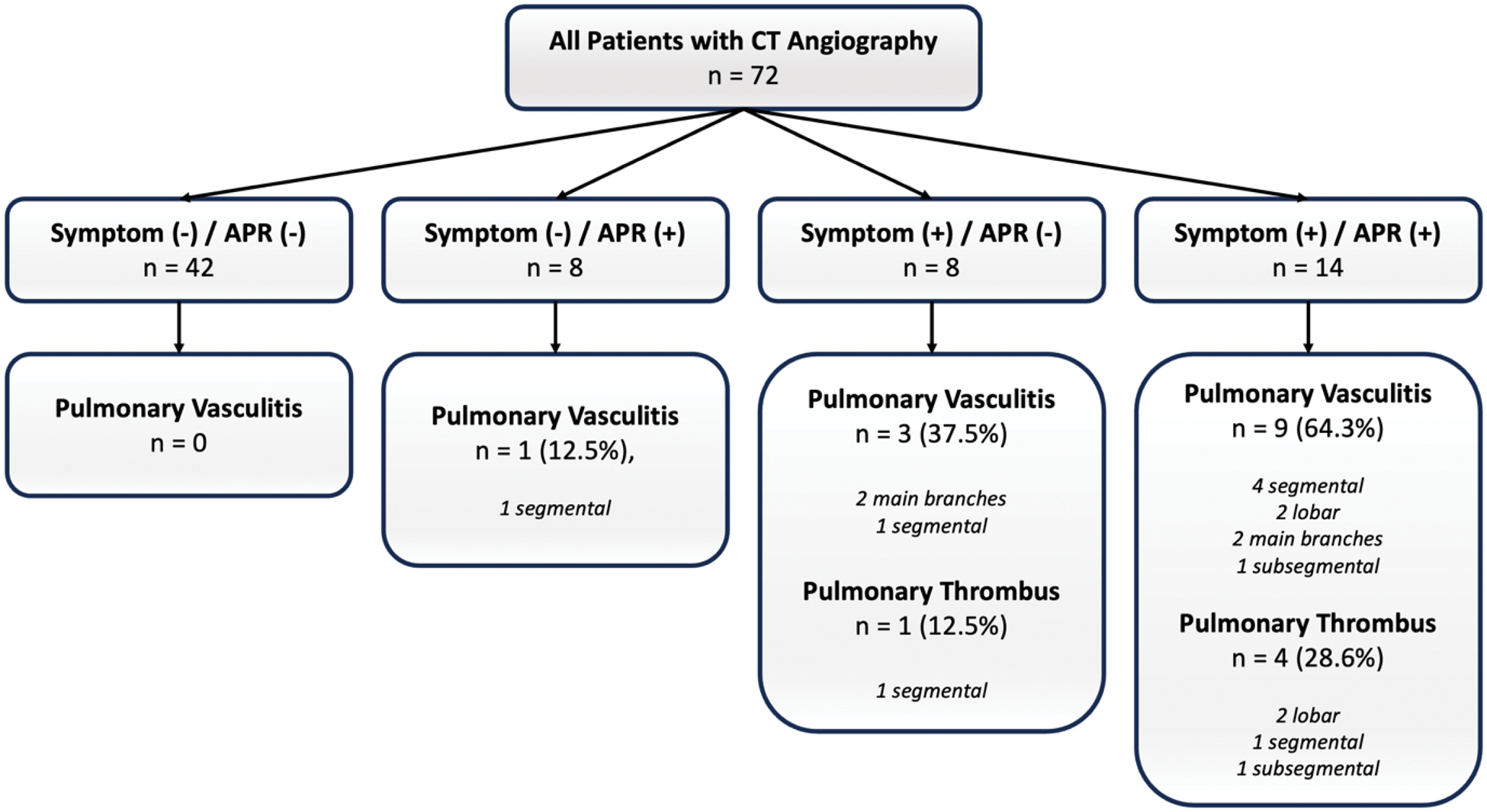

Background: The frequency of pulmonary arterial involvement (PAI) in Takayasu arteritis (TAK) has been reported between 14.0-57.0% by various imaging methods across different populations [1, 2, 3]. Undetected PAI can result in pulmonary hypertension leading to right heart dysfunction, which may result in a worse prognosis in TAK patients. Therefore, early detection and treatment of PAI can lead to a better disease course.
Objectives: This study aimed to investigate the frequency of PAI with computed tomography pulmonary angiography (CTPA) in TAK patients, as well as to assess the clinical characteristics and long-term outcomes of TAK patients with PAI.
Methods: This cross-sectional study included 72 TAK patients (62 female/10 male) who underwent CTPA to investigate PAI between January 2021 and July 2023. An experienced radiologist reviewed CTPA images, and PAI is characterized by increased PA wall thickness, stenosis, and/or thrombosis. Demographic and disease characteristics, and the follow-up information of the patients were collected from patient files.
Results: The mean age of the patients was 46.4±13.0 years, and nine patients had active disease during CTPA evaluation. The median CRP and ESR values were 3.1 (3.7) mg/L and 14.5 (21.0) mm/hr. The treatments for TAK were immunosuppressives (IS) in 62 (86.1%), biological treatment in 25 (34.7%), glucocorticoids (GC) in 30 (41.7%), and acetylsalicylic acid (ASA) in 50 (69.4%) patients. Twenty-two (30.6%) patients had a pulmonary symptom, most commonly dyspnea, and chest pain when CTPA was performed. PAI was detected in 13 (18.1%) patients. Additionally, in 5(6.9%) patients PA thrombosis unrelated to vasculitis was present (Figure 1). Among 13 PAI patients, IS treatment was initiated or changed in 9 (69.2%), GC was started, or the dose was increased in 8 (61.5%), and anticoagulants were started in 7 (53.8%). The presence of pulmonary symptoms, CRP, and ESR values were significantly higher in patients with PAI (p<0.001, p=0.001, and p=0.008). In addition, PAI was significantly lower in patients using ASA (p=0.002). After 2-year follow-up, one patient with PAI had a relapse and 3 patients had chronic thromboembolic pulmonary hypertension.
Conclusion: In this study, PAI was present in 18.1% of TAK patients, and the presence of pulmonary symptoms, higher ESR and CRP values, and lower ASA use were significantly associated with PAI.
REFERENCES: [1] Sharma S. et al., The incidence and patterns of pulmonary artery involvement in Takayasu’s arteritis. Clin Radiol. 1990;42(3):177-81.
[2] Mekinian A. et al., Pulmonary perfusion scintigraphy: a tool to detect the presence of pulmonary artery involvement in Takayasu’s arteritis. Presse Med. 2012;41(2):e37-42.
[3] Bicakcigil M, et al., Takayasu’s arteritis in Turkey - clinical and angiographic features of 248 patients. Clin Exp Rheumatol. 2009;27(1 Suppl 52):S59-64.
The distribution of CT angiography findings according to the presence of symptoms and high acute phase reactants

Acknowledgements: NIL.
Disclosure of Interests: None declared.
© The Authors 2025. This abstract is an open access article published in Annals of Rheumatic Diseases under the CC BY-NC-ND license (